 News
News5 December, 2024
Listen to the conversation on YouTube.
Weeks to Launch: 7
Welcome back to AOPA’s weekly Retrospective 1.0 Launch newsletter!
We’ve spent some time looking at the inner workings of the Retrospective platform, with segments on code, design, and its extensive artwork data fields. Now, we’re turning our attention to the human role that sets AOPA apart from other platforms: the Dedicated Curator.
This week, I had the pleasure of speaking with Don Goodes, director of AOPA, about what it means to be a Dedicated Curator. Below is a transcription of our conversation, which can also be listened to on YouTube!.
This might just be my favourite topic yet. I truly hope you enjoy it as much as I did!
Enjoying our newsletters? Share the news! New readers can sign up here!
I’m here with Don Goodes director of AOPA. We’re going to be speaking about the Dedicated Curator role.
If you’re down for me to jump right in. I’m interested in starting by having you tell us in simple terms what the Dedicated Curator is.
When an artist comes to AOPA for archiving and a website, they get assigned a Dedicated Curator, who works directly with the artists, collaborating to gather content, structuring the content of the archive and the Retrospective website. And then the Dedicated Curator always stay in contact with the artists to make sure that the updates are done in a timely manner.
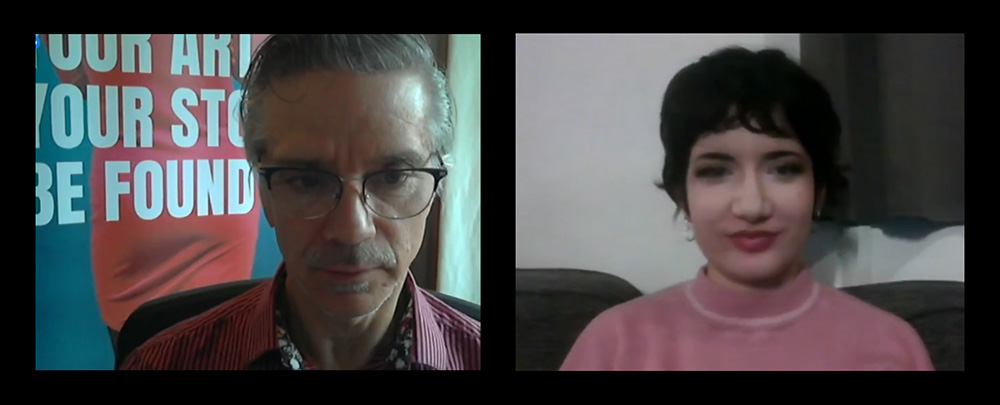
Screen capture from Don and Mya’s interview.
The idea of a project manager does come from the web development world, though, right?
Yes, a project manager is something that all web companies have. But the project managers at AOPA have a deep knowledge of contemporary art. They’re highly qualified and experienced. So there’s something different about them. They can be independent, critics, independent curators, art journalists, historians. Their role is to find the best way to present the artist’s work in the confines of an online publication.
I started imagining the Dedicated Curator as kind of like a museum or gallery curator working with senior artists, making their catalog raisonné and Retrospective. So that’s kind of how I came to the idea of using the name “Dedicated Curator.” Does that make sense?
Yeah, absolutely. You have experience as a critic and a curator. So I’m assuming there was some kind of connection experientially. Is that where the Dedicated Curator idea came from?
Yeah. Yeah, that’s it. It really does come from my own experience. I was a critic and curator for over a decade. I was critic in residence at the Dunlop Art Gallery in Regina with director Helen Marzolf, curatorial intern at the Southern Alberta Art Gallery with Joan Stebbins in Lethbridge. I wrote for all kinds of art magazines, and in particular, I was the first art critic for Hour Magazine here in Montreal with editor Josey Vogels, which was a weekly cultural rag.
At a certain point, I realized that it was hard to make a living as a critic. So, I moved over to the web. That was really at the beginnings of the web. And I found that the smarts that I developed from analyzing art applied directly to structuring content in the hypertext world of the web — the idea that you come to content from different entry points. It’s what eventually developed into usability design.
So I was artistic director and usability expert, and developed that over time. I did cultural projects mostly. I worked with Heritage Canada’s Digital Museum. I also had a stint with the NFB on their history project. Alongside of that, I did websites for university research groups. So everything was very content heavy. After a certain time working on these big projects, it was kind of frustrating because we would always run into some institutional roadblocks that stop the sites — some major sites that I worked on — from actually ever… going public.
So, I decided that I would start working with artists again. I mean, it was my expertise. I have a great love of contemporary art. So, I started working with artists that I knew in general and it was quite satisfying and my clients were really happy.
You know, I saw my peers from when I was younger, working in the art world, getting older. And I saw the web as a way to preserve their artistic legacy. So, what I did a couple of years ago was I founded AOPA with the idea of creating the Retrospective platform that we’ve been talking about in our newsletter for the past few weeks (no. 1 | no. 2 | no. 3). For me it was a more efficient way to deliver my services and a way of engaging with other independent curators and critics.
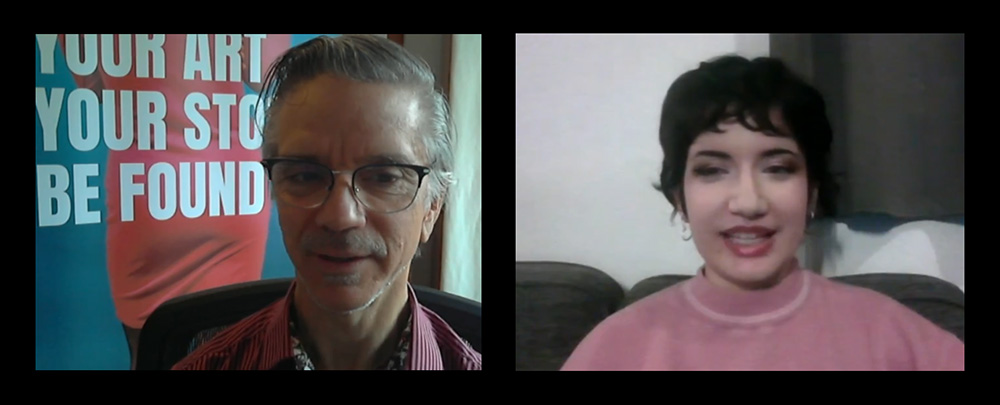
Screen capture from Don and Mya’s interview.
That’s really interesting. It’s nice to see the through line from your experiences as a writer, to an artistic director and a usability expert, how they developed from each other, and joined together so organically and productively. I’m curious, could you tell me why the Dedicated Curator is so important to AOPA specifically?
Yes, the Dedicated Curator is really at the centre of the way that that I want AOPA to work. So if you’re an artist with a huge body of work that you’ve developed and created over the years, and you want to get it online or have a kind of a digital archive of it, I thought that this idea of the catalog raisonné would be an interesting option.
The Dedicated Curator is important in that they help the artist take on this massive project of looking at a life’s work, organizing it and putting it online.
If I compare, for example, AOPA to say another web development company. They have the ability to make complex websites, like we do, but they don’t have a clue what art is about. And so the Dedicated Curator is someone who speaks the language of art and the retrospective platform is already designed with them in mind.
Then there’s also a lot of DIY tools out there for artists to make their own websites. There are the generic site builders like Squarespace and WIX, and there are the site builders especially made for artists like the Cargo site, Artist-Run Website and In Exhibit. They’re all really good for creating an online portfolio. If you want to do anything more in-depth they’re a bit weak.
Then there’s archiving and art management platforms, ARTDEX and Artwork Archive are two of those and they have a lot of data fields like we do, but they’re more for selling work online, inventory and managing. So everything that we have in the AOPA-Retrospective platform more or less is found in these other tools, but they’re just the tools. They don’t come with any support.
So basically, artists are on their own to do this work. If you’re staring down a lifetime of production in your studio with all the archives and your publications, it’s a daunting task to organize and present it.
You know, in the past, it was something that the museum would do. So if an artist had a certain notoriety and a substantial body of work, then the museum would throw its resources at you and they did the work of creating your catalog raisonné. But with 11,000 professional artists in Canada over the age of 45 year old, the capacity of museums to actually create a retrospective for artists is really a drop in the bucket. So it this kind of falls on the artist’s shoulders.
So yeah, the Dedicated Curator is kind of a virtual museum curator that’s going to help you make your retrospective and get your archive together.
I see. It makes sense to me. Hearing you explain it like that, that the Dedicated Curator role really is such a central and defining characteristic of what you’re doing with AOPA right now.
The first part of the CMS equation is providing a structure where the information related to an artwork can be entered.
It’s a bit off topic, so forgive me, but I can’t help but ask, you mentioned some other platforms. Why doesn’t the Dedicated Curator just use one of those to deliver AOPA’s services?
Yeah, like I said that each of them has their advantages and disadvantages, like I’ve used WIX to make simple kind of entry point site for artists. And like I said, ARTDEX is really an excellent platform for archiving and selling the work.
But really what the problem that I see with those is that they all use proprietary software that runs on the WIX’s or ARTDEX’s own Cloud server. So, this makes the artist’s content — online content — vulnerable to the fortunes of that company. So, for example, recently there was one of these platforms that’s was designed to help artists put their work online and they had major financial problems. Regrettably, they went under. So, all of the artists who were on their platform have to start over. So, this idea that the artist’s content is on the Cloud server of a proprietary platform makes their work vulnerable to the fortunes of the company.
At AOPA, longevity is really one of our core values. We might want to just do a newsletter about that! But for now, I’ll point out that although Retrospective belongs to AOPA, when you’re one of our clients, the platform is given to you on a life subscription basis. It’s not like a subscription every month, you pay for it once and you can use it under our licensing. It’s built on WordPress which is an open source software. So in short, the artist controls all aspects of their online presence and archive. It’s on their server, so if AOPA disappears, their work will not disappear.
Awesome. Let’s hope it doesn’t disappear [Don laughs], but it’s very reassuring to hear how much thought goes into the back end of this about, longevity and legacy and everything.
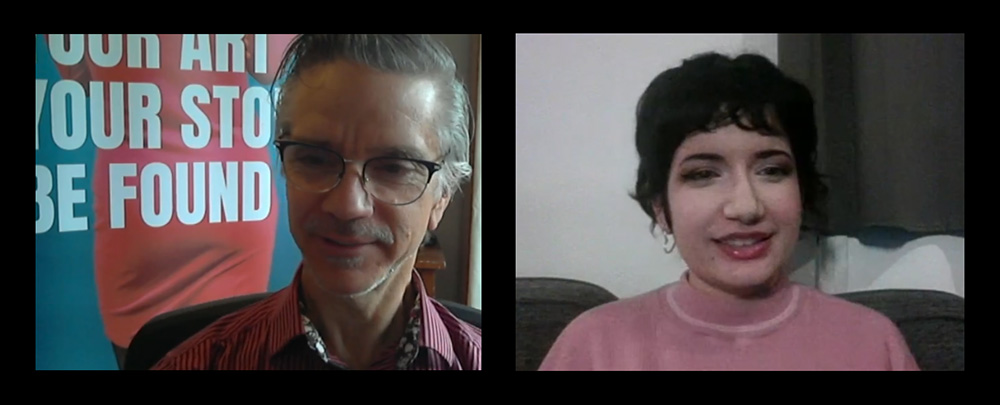
Screen capture from Don and Mya’s interview.
I’m curious to take a closer look at what the Dedicated Curator does just day-to-day. I take it you work closely with artists in that job. If the client were to reach out to AOPA interested in establishing a Retrospective, what would the early days of that process look like?
So really the first thing that we do, we look at their objectives. So, what do they want their online presence to do? We kind of start by building just using spreadsheet software, creating an inventory of what they would like to see online. We have the AOPA-Retrospective platform, but sometimes that’s not where artists want to start, so, the first step is to really look at what the artist wants to do with their online presence. And of course, the Dedicated Curator can give them advice, talk about the implications and the cost of whatever direction is decided upon.
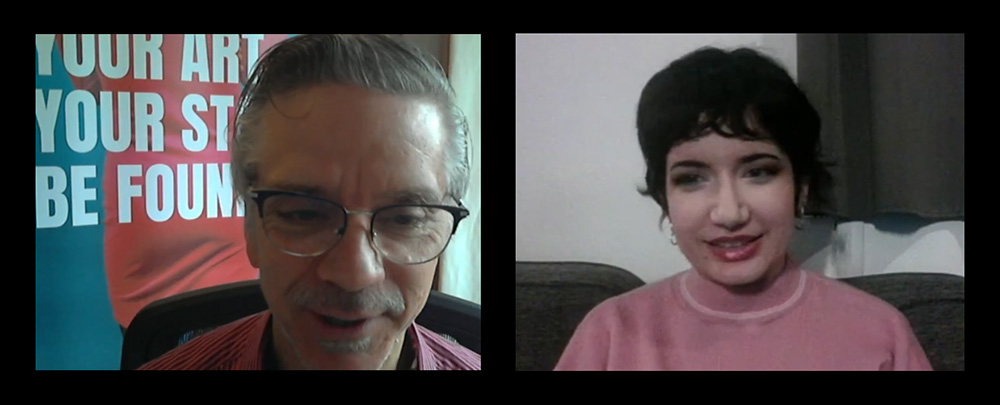
Screen capture from Don and Mya’s interview.
Moving from there, let’s say you’re working with the client, and you’ve already got the ball rolling, you have that kind of foundational work established, that rapport with the person. The Retrospective has already started at that point, you’re deep in making it happen. What does the day in the life of the Dedicated Curator look like at that point in the process?
OK, I forgot to say something for the first step. One of the things that’s really important is that the Dedicated Curator has to have a deep understanding of the artist’s work. So they will start by looking at images of the work doing a studio visit, if it’s possible… Talking to the artist about what kind of themes they’re dealing with in their work, what’s been the history of their work. This becomes the foundation for all of the Dedicated Curator’s work. From there, it’s to start building an idea of how the online Retrospective website is going to be structured.
Recently, I was working with an artist, she wanted to put on about 100 artworks, so we looked at all those artworks. We did this process, like writing down all the names of the artworks, putting them on a piece of paper, and then seeing how we could group them together, because she wanted to have her works grouped thematically.
We took those little sheets of paper, and started analyzing what were some of the core themes in each of each of the artworks. And then we created groupings from that. So that’s the kind of foundation that the work starts on.
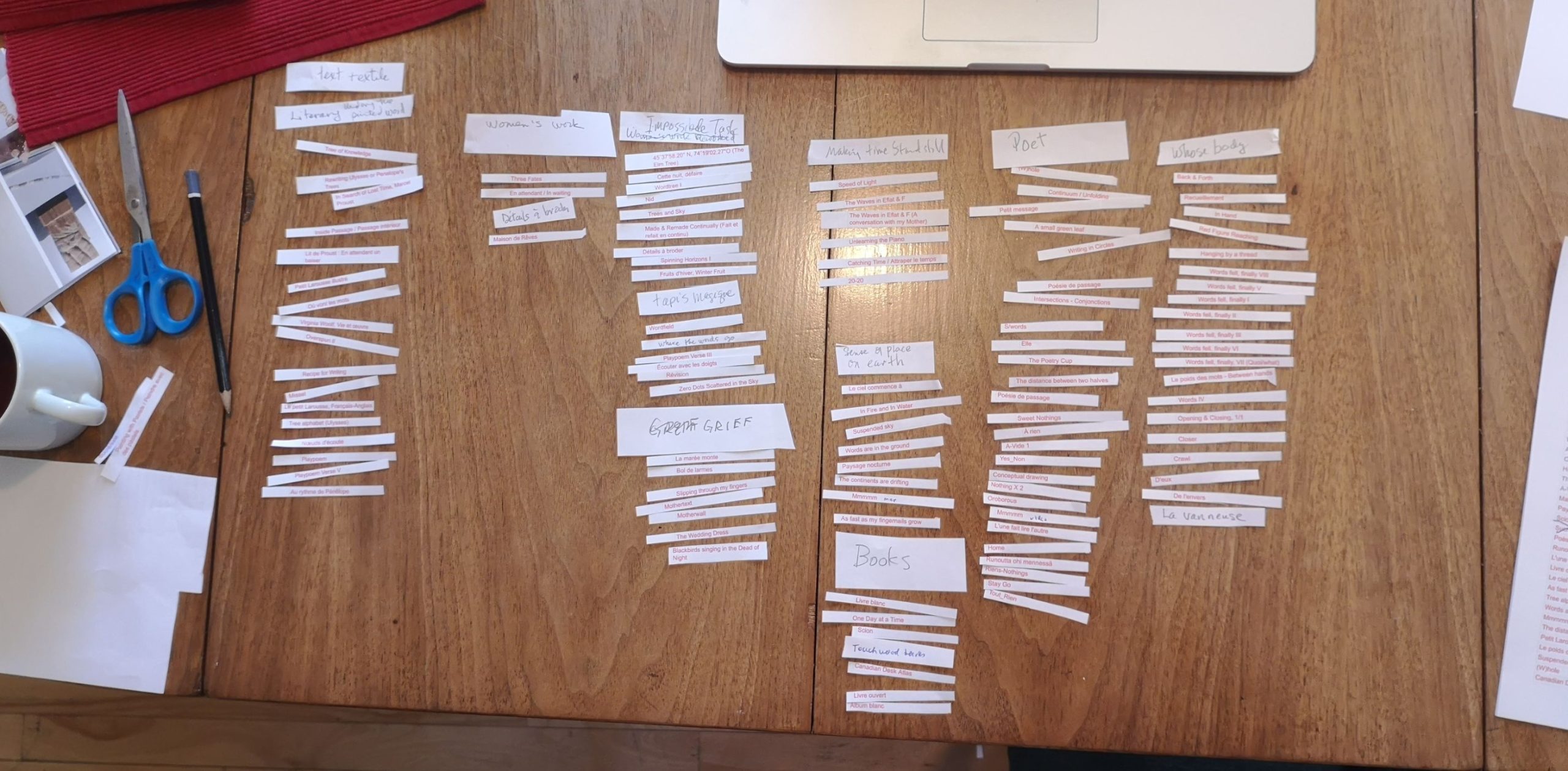
Organizing Karen Trask’s artwork titles into thematic groupings.
Once we get the ball rolling, then it’s really a lot of just leg work. You know gathering the documentation together, creating folders for each of the artworks, inputting the information about the artworks, doing research, trying to find out which publications have been written on exhibitions, where the exhibition happened…
So, all of the data, that’s really the next step is this kind of real…grunt work creating the archive and bringing together the documentation, video and digital images.
There might be work that needs to be done as well if at a certain point we realize that there that certain artworks need to be re-photographed. Then we’ll contact an artwork photographer and get the photographer to reshoot some work. There could be slides that need to be digitized and colour correction that needs to be done. So, it’s really the grunt work of getting all that stuff into the platform.
I also know from working with you just how much information is going in, just all the time. It really is a labour of love to get that much in there, even for one artist. So, it’s really interesting to see those levels.
And I know that it can be frustrating for us, but we try to really be as rigorous as possible, making sure that the – and you’re good at this Mya – making sure that the information is presented in a consistent way. It makes it easier for the user to understand and look through the works if we’re consistent.
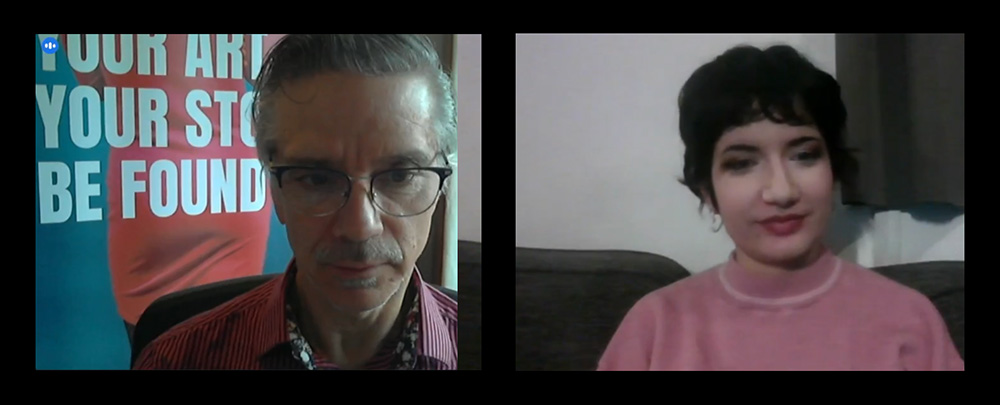
Screen capture from Don and Mya’s interview.
I want to say I was surprised and pleased by how much the Retrospective platform is capable of holding. I was also curious if there’s any other elements of the process that people might not expect, something that goes on behind the scenes that would be interesting for people to know about.
Well, one thing that I like about the platform – and again it’s kind of the Dedicated Curator’s responsibility to make this happen– is how we have publications, we have exhibitions and we have artworks with links established between them.
So, what publications are connected to which artworks? Which artworks are connected to which exhibition? So, all that internal web, I think that that’s something that people don’t expect and that you can’t do in other platforms. But for me it’s it adds a lot of value.
As someone who’s doing research in other topics, it’s really such a gift to have those webs built already and those connections made for understanding… even just chronology and context, and you were talking earlier about themes, so seeing how they all connect contextually, it’s really fascinating and gives a lot, I think, of credit to the artists and their work.
Yes, I agree!
We talked about this a little bit earlier. There’s obviously a lot of work that goes into ensuring that an artist is really thought of and considered in the making of their Retrospective. I am curious if there are specific measures or thoughts that go into ensuring that each artist’s Retrospective is uniquely tailored to their body of work.
That, again, is really the responsibility of the Dedicated Curator. They really need to have a deep understanding of the work.
The platform takes a backseat. The way that it’s designed is really to put the work forward, so the uniqueness comes first from the work itself, and then it comes from kind of more subtle things. It comes from groupings, it comes from the selection of the works, like which works should be included, which works are secondary works that can just sit in the archive but don’t have to be included in the retrospective.
If an artist really feels that that they need a certain look and feel, then the Dedicated Curator and the graphic designer and the artists will get together and see if there’s customization that can be done.
But really, I think of the Retrospective platform a bit like the white cube of the gallery. It can accommodate a lot of different practices. And I think that if the work is organized properly and how the website flows, then the uniqueness of the work comes through because the work is unique.
Fantastic. You’ve got us excited about Dedicated Curators. I want to know what your plans are from here for AOPA Dedicated Curators. Looking to the future!
When AOPA-Retrospective 1.0 is launched in January, we’re going to start becoming very proactive about creating a network of Dedicated Curators.
So again, this would be freelance art critics, curators, journalists, art historians, bloggers, as well as other arts professionals who provide services to artists like estate and career planners.
I’m going to start with Canadian centres, Halifax, Quebec, Toronto, Montreal, like Hamilton, Ottawa, Winnipeg – yay! – Saskatoon, Regina, Calgary, Edmonton, Victoria and Vancouver, to try and find people who are writing about art and allow them to work with the artists in their in their community. So start with Canada and then hopefully expand beyond our borders.
The idea is the work that they do with AOPA will add another income stream for these independent cultural workers. We hope that this would represent like a welcome source of income for them.
I am really excited about the idea of creating this network of us Dedicated Curators who can provide that service for artists.
That is fantastic and I think based, honestly, on our conversation, if someone wasn’t excited about this idea before, they certainly will be now. I really appreciated talking about all of this with you as we get closer to wrapping up, I’m curious if you have any final thoughts, maybe something we didn’t get to that you wanted to cover.
Yeah, if anyone’s interested in connecting with AOPA, I would be more than happy to hear from them.
Thank you very much for talking to me today about the Dedicated Curator and obviously for all of the exciting work that’s being done for AOPA and the Retrospective launch.
Thank you Mya!
Wow! Thank you again, Don, for this enlightening conversation. Having such an in-depth first look at what it means to be a Dedicated Curator has really put this entire project into perspective. How amazing!
Next week, we’ll be discussing AOPA’s considerations with respect to how the Retrospective platform can gather information and contribute to an artist’s legacy. We’ll be thinking about longevity in the art world, enduring archives, and how these concepts are being tackled by the AOPA-Retrospective platform.
Share the newsletter signup page while we rev up for the Retrospective launch! Our weekly newsletters are the best way to stay in the loop. Hope to see you there. New to our newsletters? Sign up for this newsletter here.
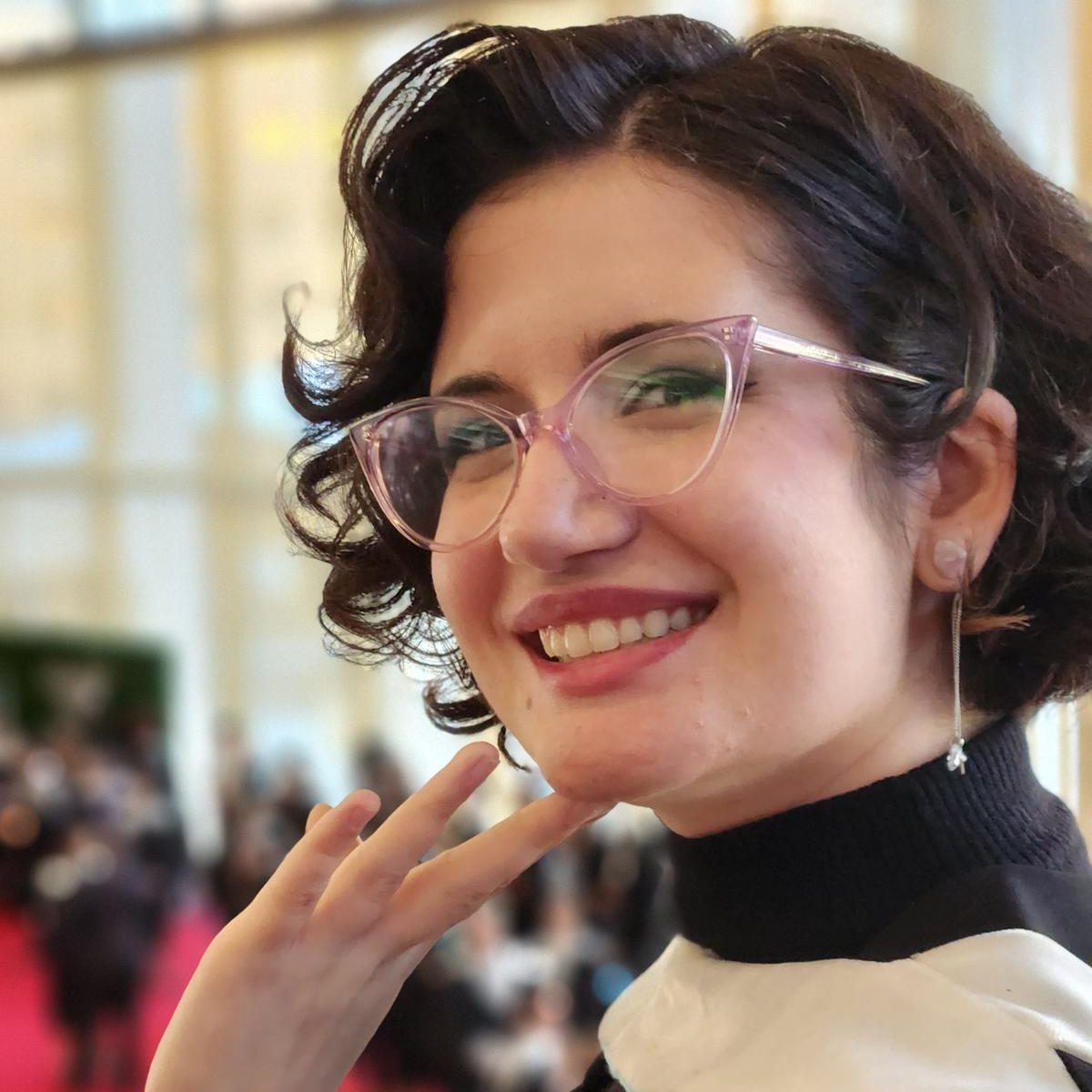
Mya Fernandes-Giles, AOPA Dedicated-Curator Assistant
Master’s student in Art History at Concordia University, working on a project that relies heavily on alternative archives. Has a great appreciation for record-keeping and cultural preservation, especially amongst little-known artists and communities. Recipient of the Concordia Merit Scholarship, the Guido Molinari Prize in Studio Arts and the Sarah Leaney Award in Ceramics and Fibers.
Artist Online Presence and Archiving (AOPA), provides professional online archiving and web-development services to mid- to late-career contemporary visual artists. AOPA was founded in 2023. It grew out of the freelance work of Don Goodes, who was an art critic and curator in Canada for a decade before moving over to web development in the cultural sector. AOPA delivers its services via a growing team of freelance writers, curators and designers spread across Canada. Over the past 2 years, the core team has been developing a flexible and comprehensive online platform called AOPA-Retrospective, a key tool in delivering AOPA’s services. AOPA-Retrospective is designed to fulfill the needs of contemporary artists, for both archiving and the online presentation of their oeuvre in the spirit of the catalog-raisonné.
For questions or inquiries see our contact page. We would love to hear from you.
choose your preferred method of communication